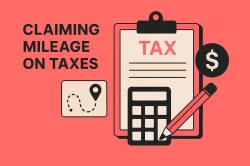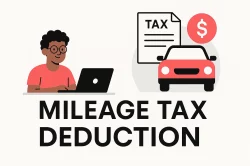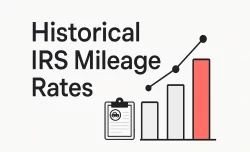Table of Contents
Deducting vehicle expenses can lower your tax bill if you use a vehicle for work. You have two options: the standard mileage rate or the actual expenses method. This guide focuses on how to use the actual expenses method to get the biggest tax break possible.
What are Actual Vehicle Expenses for Tax Purposes?
When you use the actual expenses method, you track and deduct the real costs of running your vehicle for your business. This includes many different costs.
Here’s a list of what counts as actual vehicle expenses:
- Gas and oil
- Maintenance and repairs
- Tires
- Insurance
- Registration fees
- Lease payments (if you lease your vehicle for work)
- Depreciation (if you own your vehicle)
- Licenses
- Garage rent (if you pay for a spot for your business vehicle)
- Parking fees and tolls you pay during business trips
It’s important to remember that you can only deduct the part of these costs that are for your business use, not your personal driving.
Actual Expenses vs. Standard Mileage: What’s the Difference?
People often wonder which method is better for deducting vehicle expenses. The actual expenses method is one way, and the standard mileage deduction is the other.
The standard mileage method is simpler. You just multiply the number of business miles you drove by a rate the IRS sets each year. This rate changes, so always check the current year’s number and not historical mileage rates.
The actual expense method, as we talked about, involves keeping track of all your real costs, like gas, repairs, and insurance. Then you figure out what portion of those costs is related to your work.
Switching Between Methods
You can switch between the actual expenses and the standard mileage method from year to year, but there are some rules. If you use the standard mileage rate, the very first year you use a car for your business, you have the flexibility to switch to actual expenses in later years for that same vehicle. However, if you start by using actual expenses and claim depreciation, you generally have to stick with actual expenses for that vehicle going forward.
How to Calculate Your Deductible Actual Vehicle Expenses
Calculating your deduction using the actual expenses method takes a few steps. It’s not difficult, but it does require good record-keeping.
First, you need to track your total miles driven for the year. This includes all miles, both business and personal.
Then, you need to track your business miles. These are miles driven specifically for your work. Miles driven from your home to your regular workplace (commuting miles) usually don’t count as business miles. However, if you have a home office that qualifies as your principal place of business, driving from your home office to a client’s location is considered business mileage.
Next, you need to calculate your business use percentage. You do this with a simple formula:
Business Use Percentage = (Business Miles ÷ Total Miles Driven in the Year)
TIP: MileageWise’s vehicle expense tracker feature helps you stay organized. Some other mileage apps also include this function (Like Everlance or Triplog, except MileIQ).
FAQ
What are actual vehicle expenses?
Actual vehicle expenses are the real costs you incur for operating your vehicle, such as fuel, oil, maintenance, repairs, insurance, registration, depreciation, and lease payments, rather than using a simplified per-mile rate.
How do I calculate deductions using actual expenses?
To use actual expenses, track and total all qualifying costs for the year, then multiply that total by the percentage of miles driven for business versus total miles driven. The best mileage tracker app will calculate them automatically for you.
Can MileageWise help me manage actual vehicle expenses?
Yes—MileageWise lets you log and categorize every vehicle expense alongside your mileage, providing detailed reports that simplify calculating and substantiating your actual-expense deduction.
Try MileageWise for free for 14 days. No credit card required!
Related Terms

Our New Timeline Import App
Our new Timeline Import app makes it incredibly easy to turn your Google Maps Timeline trips into a clean, accurate, and IRS-proof mileage log. Without

DoorDash Tips and Tricks: Your Edge Over Competition
Last Updated: November 17, 2025 I’m excited to share the top DoorDash tips and tricks shared by YouTuber Pedro “Mr.BetonYou” Santiago. He collected and vetted the

8 Uber and Lyft Scams Every Driver Should Know
Last Updated: November 9, 2025 Driving for Uber or Lyft can be a rewarding gig, offering flexibility and the chance to meet new people. However,
SherpaShare Shutdown – What To Do Now?
Last Updated: October 7, 2025 SherpaShare was a service designed primarily for people who work as independent contractors, particularly those in the ride-sharing and delivery
Gas Mileage Tracker: Your Key to Savings
Last Updated: August 8, 2025 A gas mileage tracker helps drivers watch their vehicle’s fuel use, mileage, and related costs. You might want one to
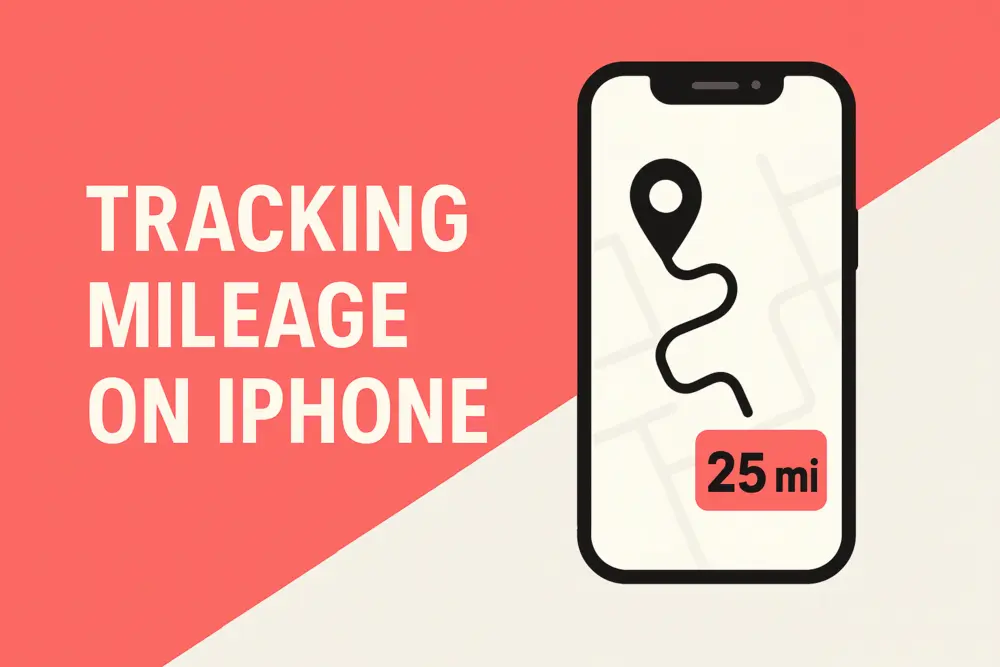
How To Track Miles on iPhone: Find your Match
Last Updated: August 6, 2025 Looking to track miles on your iPhone? Whether it’s for fitness, personal use, or business tax deductions, your iPhone offers
Related Guides

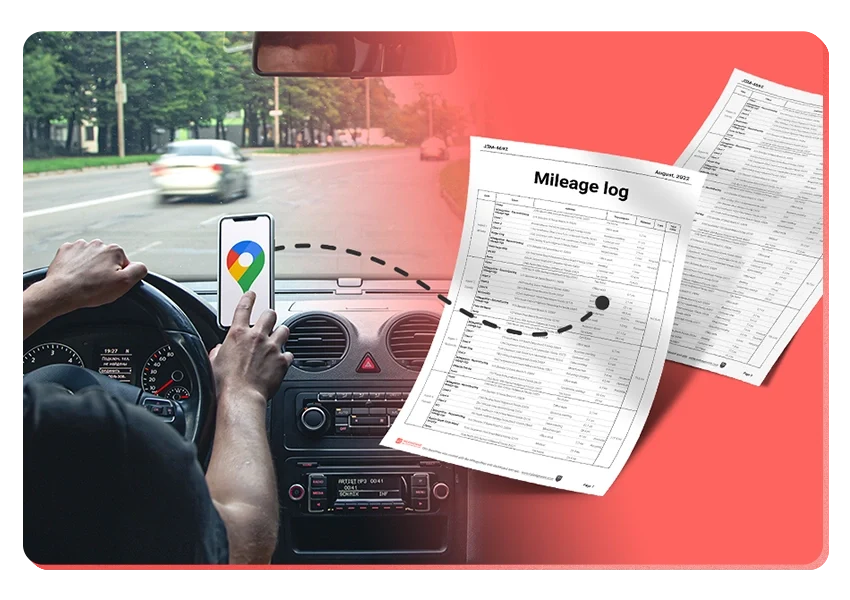
It’s Finally Here! Google Maps Timeline Import from Mobiles
Transform your Trip Lists into Mileage Logs with MileageWise

Our New Timeline Import App
Our new Timeline Import app makes it incredibly easy to turn your Google Maps Timeline trips into a clean, accurate, and IRS-proof mileage log. Without

DoorDash Tips and Tricks: Your Edge Over Competition
Last Updated: November 17, 2025 I’m excited to share the top DoorDash tips and tricks shared by YouTuber Pedro “Mr.BetonYou” Santiago. He collected and vetted the

8 Uber and Lyft Scams Every Driver Should Know
Last Updated: November 9, 2025 Driving for Uber or Lyft can be a rewarding gig, offering flexibility and the chance to meet new people. However,
SherpaShare Shutdown – What To Do Now?
Last Updated: October 7, 2025 SherpaShare was a service designed primarily for people who work as independent contractors, particularly those in the ride-sharing and delivery
Gas Mileage Tracker: Your Key to Savings
Last Updated: August 8, 2025 A gas mileage tracker helps drivers watch their vehicle’s fuel use, mileage, and related costs. You might want one to

How To Track Miles on iPhone: Find your Match
Last Updated: August 6, 2025 Looking to track miles on your iPhone? Whether it’s for fitness, personal use, or business tax deductions, your iPhone offers

Was Your Google Timeline Deleted? Here’s What Happened:
Last updated: November 20, 2025 If you recently opened Google Maps and noticed your Timeline was deleted or partially missing, you’re not alone. In this

It’s Finally Here! Google Maps Timeline Import from Mobiles
Struggling to Manage Your Trips After Google’s Timeline Update? If you’re reading this, you’ve likely encountered the recent update affecting Google Maps Timeline. With Timeline
Transform your Trip Lists into Mileage Logs with MileageWise
Last Updated: October 1, 2025 Do you have a list of monthly trips from a data source like Excel or Google Timeline, but need to

How to Download Google Timeline Data: A Guide
Google Timeline Import Hub Last Updated: October 30, 2025 Want to download Google Timeline data? This guide shows you how to extract your location history

How to Export Google Maps Timeline: Get Your Data
Google Timeline Import Hub Last Updated: October 29, 2025 It can be tricky to export Google Maps Timeline data after Google’s recent updates. Many users
Google Maps Mileage Tracker: From Timeline to Mileage Log
Google Timeline Import Hub Last Updated: October 29, 2025 If you’re an active user of Google Maps Timeline you likely already know how convenient it
Timeero
Table of Contents Timeero Timeero is a time, location, and mileage tracking app designed for businesses and teams in the United States. It helps employers
Milewise by Allstate
Table of Contents Milewise by Allstate Milewise by Allstate is a pay-per-mile car insurance program offered by Allstate Insurance in the United States. It’s designed
Hurldr
Table of Contents Hurdlr Hurdlr is a finance and expense tracking app designed for self-employed professionals, freelancers, and gig workers in the United States. It



